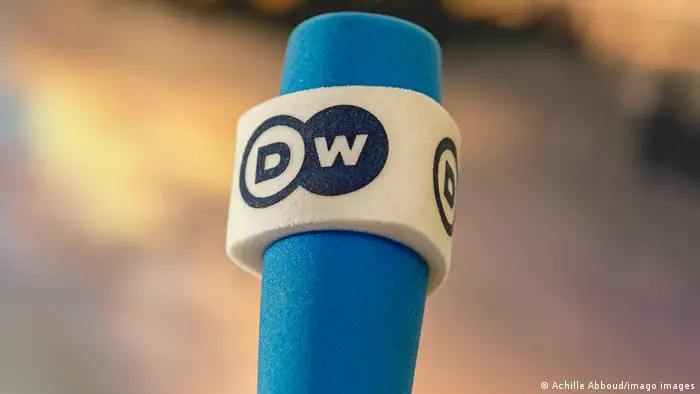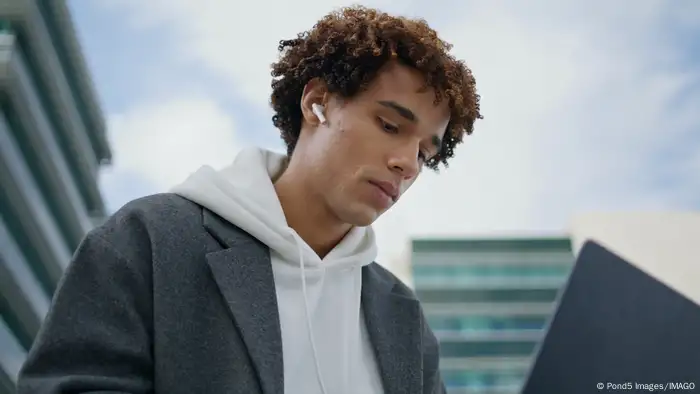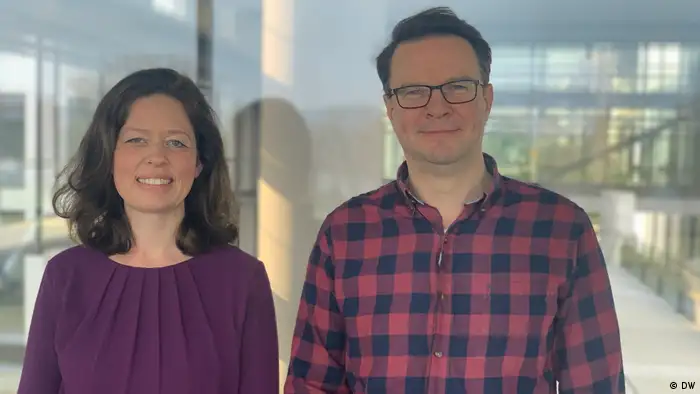Podcasting
Podcast reimagined: New formats for DW’s long-running environment show tell stories in innovative, immersive ways
DW’s long-running Living Planet environment show got a redesign recently. Its producers introduced three new formats that take advantage of podcasting’s flexibility and offer a new kind of listening experience.
DW has covered the environment for years, long before climate change was topmost on many people’s minds. Its environment radio magazine, once called Man and Environment, first aired in the last century. In 2005 the show was rechristened Living Planet and just last month it got another makeover, this time with some innovative formats specially designed for podcast listeners.
For many radio shows, especially magazine-style ones, there was a tried-and-true formula: an intro, some news, and then radio packages with narration, clips and maybe sound. It worked for years and still does to some extent. But podcasting’s lack of some of the constraints of radio has meant producers can play around with formats. They don’t have to fill a 30-minute or one-hour time slot every day or week. And podcasting has introduced presentation styles and approaches to coverage that you didn’t often find on the radio dial.
So Living Planet decided to give itself a fairly radical makeover and the PodCircle got together with two of its producers to find out what they did and why they did it.
Neil King is a senior editor at DW and has been with the broadcaster since 2007. He’s worn multiple hats, going from live news broadcasts to radio current affairs before he took a detour to online before returning to radio and now, podcasting. Senior Editor Kathleen Schuster has been at DW since 2012. Her broadcasting career started out at a public radio station in her native Tennessee. She worked in online news until moving to the environment section. The two of them form the core of the Living Planet production team and were key in developing the show’s new sound, which débuted on World Environment Day in June.
DW Akademie: How did you go about developing the digital-first strategy for Living Planet?
Neil: Last year we workshopped with external experts like Kellie Riordan, who used to be with ABC Australia. With her, we developed formats that were more suitable for on-demand listening. We had already been thinking about three different formats we wanted to have in rotation. We refined them based on feedback from target audiences in the US. Our main goal was to improve storytelling and develop a podcast format with a modern feel – featuring more soundscapes and not as reporter-driven. This meant telling the story in a way that gave it more air to breathe, both in terms of script and sound.
Give us some details about the three new formats.
Neil: Sure. The first one is what we call the "Deep Dive." It focuses on one pertinent environmental topic for both the podcast and radio. It includes experts and merges storytelling with facts and information. A great example is the show Kathleen did on farmers’ mental health during the farmers’ protests in Europe.
Kathleen: Yes, we spent several weeks digging into that topic, finding the right protagonists and bringing out a story that wasn't being covered in the news. The online version of the story got picked up by Covering Climate Now, so we knew we were on the right track. The approach in general allows us to explore topics in-depth and provide a narrative that keeps listeners interested. For instance, I visited a farmer and started the story at the scene, weaving in different interviews conducted via Zoom. We experiment with what works for each story, whether it lends itself to a classic narrative or requires a different approach to make it relatable and engaging.
Neil: The second format we developed is called "What's Better?" It's shorter and more conversational and involves interaction between the reporter and host. Ideally, we want to have questions coming in from listeners who are asking us: What’s better for the environment? Tea or Coffee? I need to know. So we research, talk to experts, and hopefully by the end of the episode the listener has an idea of what they can do to improve their carbon footprint or their habits to reduce the impact on the environment. Other topics have been things like plastic vs. paper, electric vehicles vs. combustion engines and polyester vs. cotton clothing. We want to make complex topics accessible and relatable.
And format number three?
Neil: So, the third format we developed is called "Naturally Connected." It’s a bit different from the others, more reflective and beautifully scripted, focusing on nature in ways that make listeners appreciate the everyday natural elements they might overlook. For example, we did an episode on crows. They're everywhere, especially in urban areas, but how often do people really think about how they live or behave? This format always includes an interview with an expert to provide in-depth information about the featured species or natural phenomenon. We use a lot of soundscaping and music to create a rich listening experience. It's the shortest of our formats, typically about 10-12 minutes, and it’s almost like a form of nature bathing – meant to relax and immerse the listener.

DW has covered the environment for years, long before climate change was topmost on many people’s minds
Do these segments also end up on the radio show?
Neil: Yes, everything in our podcast feed makes its way into the radio show. If a segment is too short for the radio format, we supplement it with bonus content or related audio. Since our approach is digital-first, we ensure the podcast feed is top-notch. If necessary, we adjust the radio program to fit these shorter segments.
Kathleen: One of the advantages of this digital-first strategy is the flexibility it gives us. Working directly with our team here in Bonn and Berlin, we can produce high-quality content without depending too much on external reporters, which can sometimes be challenging in terms of availability and consistency.
Speaking of challenges, how has the transition from radio to podcasting been for you?
Kathleen: With podcasting, we can be more directly involved in all aspects of production, from reporting to editing. This direct involvement allows us to create more cohesive and well-rounded stories. Plus, we can communicate our ideas more effectively within our team, and that leads to better content.
So you launched the new formats in June. How have they been received?
Neil: The relaunch has been much more successful than we had anticipated. Just the Apple stats, which make up about 75% of our listeners, are quite impressive. We managed to get into the New and Noteworthy section on Apple Podcasts, and that gave us quite a boost. According to Chartable, we were number one in the US in the nature category directly after the relaunch for almost 10 days. So we've made a huge leap there. And just in terms of looking at the followers, over the last 60 days, the streams on Apple Podcasts picked up by 245%, we got 476% more listeners and 34% more subscribers.
Finally, what are your hopes for these new formats?
Kathleen: My hope would be that we hook in people who don't necessarily consider themselves diehard followers of environment and climate coverage. Maybe they’re just interested in nature in general or they want more information, and then they stick around and find this different way of getting the information they need without feeling completely helpless. I’d like to get people interested in this topic who aren't already there.
DW recommends
- Date 01.07.2024
- Author Kyle James (interview)
- Feedback: Send us your feedback.
- Print Print this page
- Permalink https://p.dw.com/p/4hkEb
- Date 01.07.2024
- Author Kyle James (interview)
- Send us your feedback.
- Print Print this page
- Permalink https://p.dw.com/p/4hkEb


